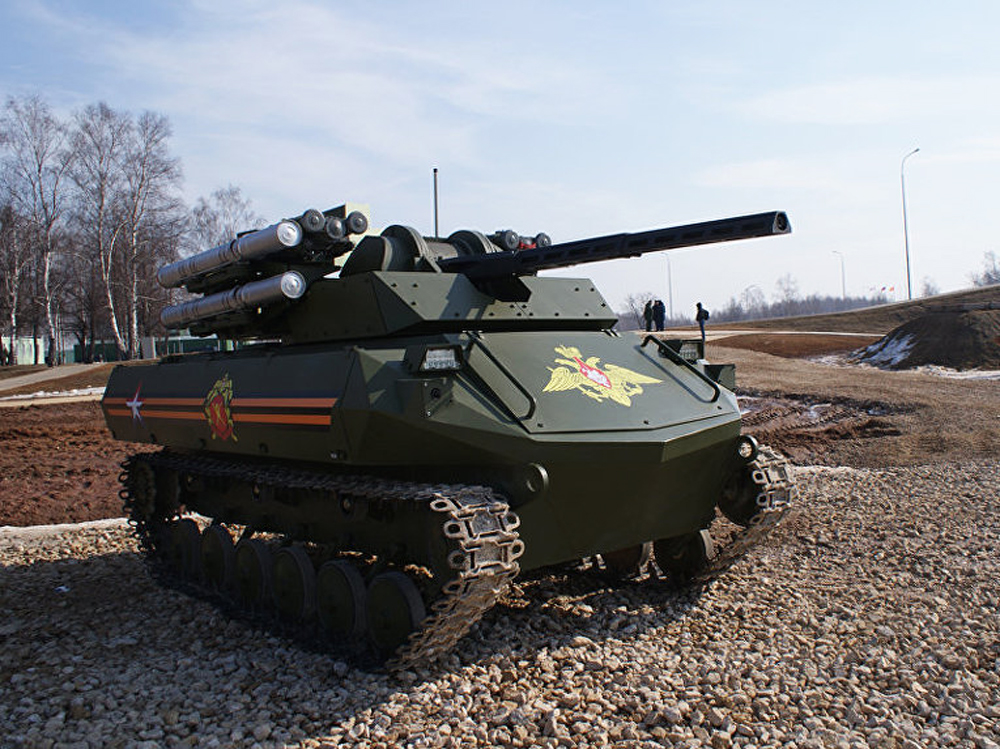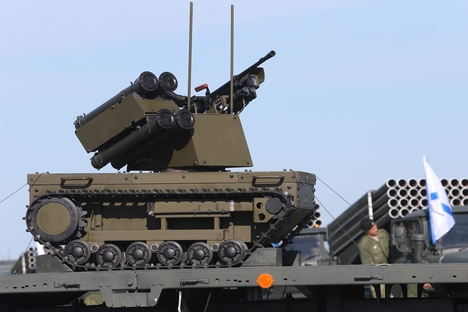Russia unveils robots for the military

Uran-9 robotic combat system.
mil.ruRussia's ambitious Robotics 2025 programme (adopted in late 2014) aims to develop military robots for every environment; maritime, aerial and terrestrial. Roman Kordyukov, deputy Head of the Russian Defence Ministry's Research and Innovation Department, talked about the programme with RIR.
Common technical requirements and standards are now being developed for military robots. The issue of import substitution needs to be resolved, testing grounds need to be established and effective cooperation between the defence industry and the end user of the robotics, the Ministry of Defence, to be organized.
The existing new robotic systems are undergoing testing and, according to Sergei Popov, head of Russia's Robotics Research and Test Centre, will enter service in 2016.
A Russian attack drone (light version)
At an exhibition on robotic automation and Russia's Armed Forces (held in Moscow in February under the auspices of the Ministry of Defence), Russian defence industry officials unveiled a series of robotic military attack systems.
The United Instrument Manufacturing Corporation (UIMC) announced an airborne robotics complex called "Razvedchik" ("Scout"), comprising a robot helicopter, an observation helicopter, a reconnaissance helicopter and an attack helicopter with a grenade launcher. All these aircraft can operate both as a group and separately. For example, they can follow their own route, establish their position, "talk" to other drones, perform reconnaissance work and transmit data.
"The helicopter with the grenade launcher in the Scout system is the first attack drone in Russia," UIMC's Leonid Khozin told RIR. The attack drone itself was not shown at the exhibition, but a video published by the company shows it flying and firing from its grenade launcher. Whether it was supposed to hit a specific target is not clear, but the fact that it fires straight shows that with a targeting system on board it could be an accurate "marksman" and justify being called the first attack drone, even if as yet there is only a "light" version of it.
The all-seeing eye of the Corsair
The UIMC said Russia could acquire another attack drone this year, which will undergo official testing in summer 2016. This is the "Korsar" ("Corsair"), a short-range unmanned aerial vehicle. Little is known about it, and the project is so secret there are not even any publicly available images of it.
The developers said the UAV is nearly ready, and is flying and performing well. The main function of the Corsair is surveillance, including with hyper-spectral imaging, which means no one will be able to escape the drone's "sharp eyes". Nor will it be possible to deceive it using traditional methods of dissimulation, like inflatable mock-ups of military equipment. The drone will detect the deception immediately and "see" material other than metal. Apart from a hyper-spectral camera, the UAV could also carry other equipment, including radar sets, electronic warfare systems and even weaponry.
"There is no attack version of the Corsair at the moment, but the option for it to have such a payload is there," said Khozin.
All rights reserved by Rossiyskaya Gazeta.
Subscribe
to our newsletter!
Get the week's best stories straight to your inbox
